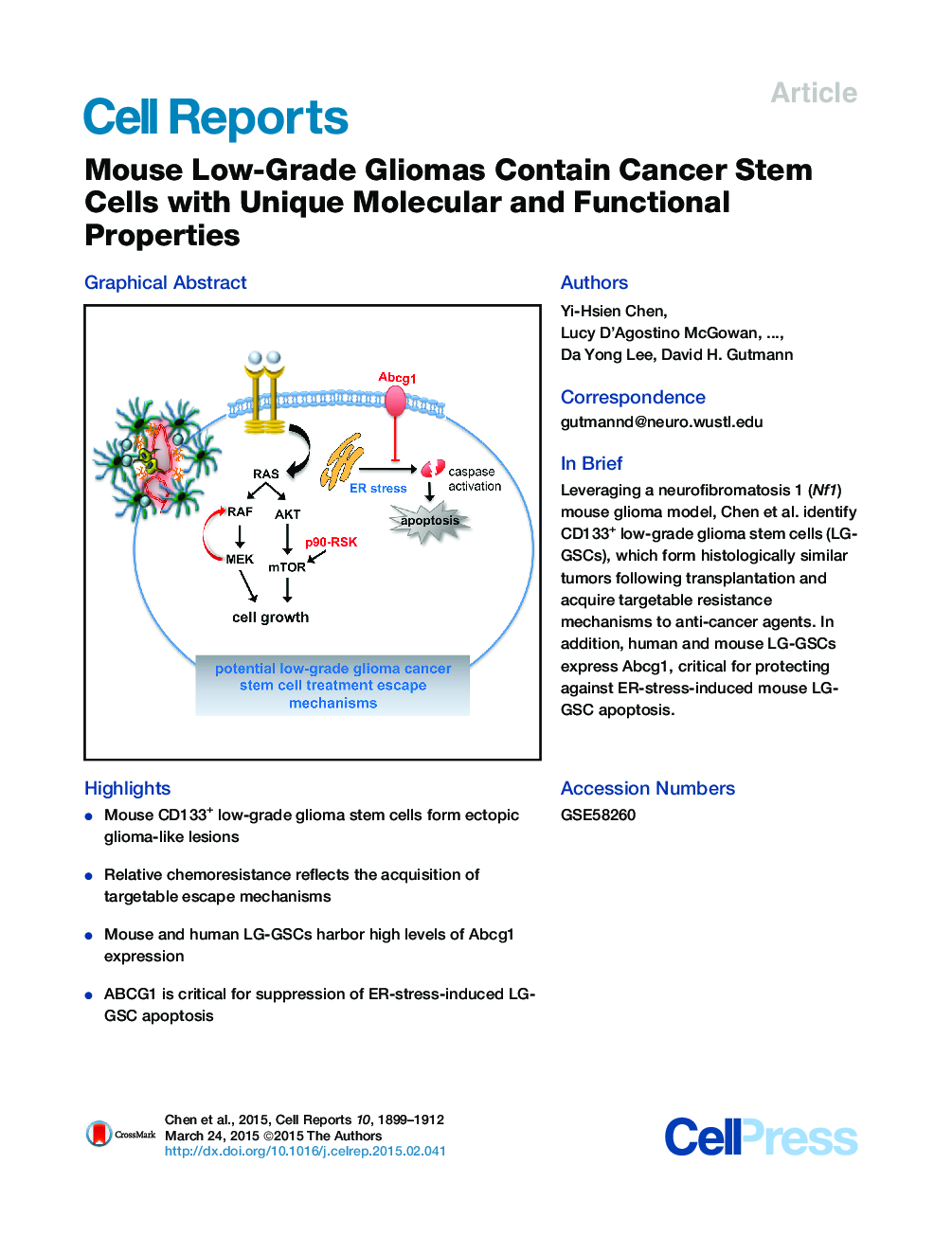| Article ID | Journal | Published Year | Pages | File Type |
|---|---|---|---|---|
| 2040856 | Cell Reports | 2015 | 14 Pages |
•Mouse CD133+ low-grade glioma stem cells form ectopic glioma-like lesions•Relative chemoresistance reflects the acquisition of targetable escape mechanisms•Mouse and human LG-GSCs harbor high levels of Abcg1 expression•ABCG1 is critical for suppression of ER-stress-induced LG-GSC apoptosis
SummaryThe availability of adult malignant glioma stem cells (GSCs) has provided unprecedented opportunities to identify the mechanisms underlying treatment resistance. Unfortunately, there is a lack of comparable reagents for the study of pediatric low-grade glioma (LGG). Leveraging a neurofibromatosis 1 (Nf1) genetically engineered mouse LGG model, we report the isolation of CD133+ multi-potent low-grade glioma stem cells (LG-GSCs), which generate glioma-like lesions histologically similar to the parent tumor following injection into immunocompetent hosts. In addition, we demonstrate that these LG-GSCs harbor selective resistance to currently employed conventional and biologically targeted anti-cancer agents, which reflect the acquisition of new targetable signaling pathway abnormalities. Using transcriptomic analysis to identify additional molecular properties, we discovered that mouse and human LG-GSCs harbor high levels of Abcg1 expression critical for protecting against ER-stress-induced mouse LG-GSC apoptosis. Collectively, these findings establish that LGG cancer stem cells have unique molecular and functional properties relevant to brain cancer treatment.
Graphical AbstractFigure optionsDownload full-size imageDownload as PowerPoint slide
